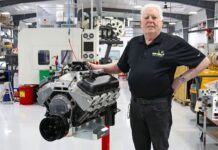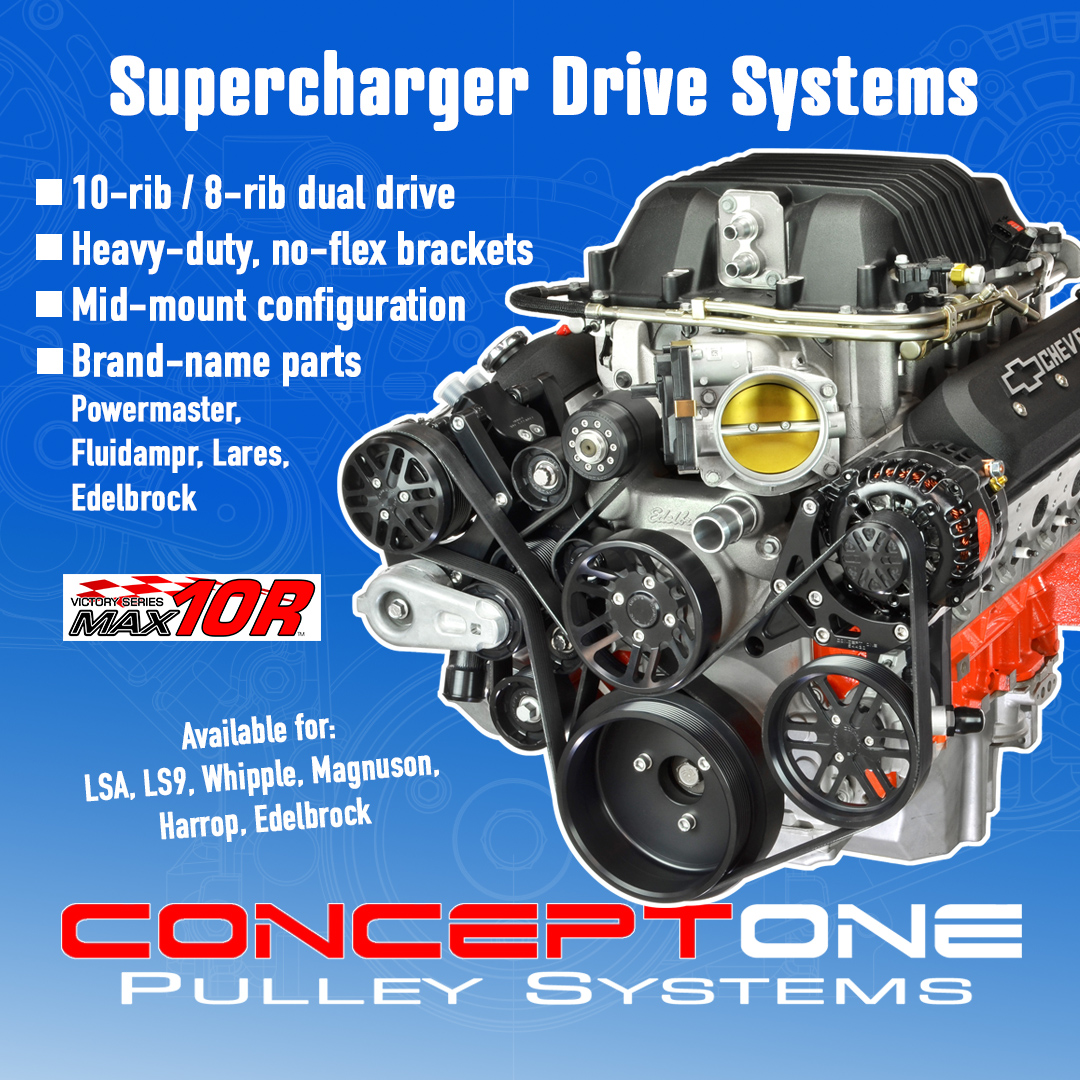By Taylor Kempkes – Images by the Author
Wouldn’t it be nice if, after building a brand-new engine for your muscle car, you could just drop it in, hook everything back up, and tear down the street? It feels like that should be the case. Especially when installing a carbureted small-block back into a ’69 Nova that was already equipped with a carbureted small-block. So what’s the hang-up?

Read More: Old-School 327ci Small-Block Chevy Engine
Turns out, there are plenty of opportunities for hang-ups. Some come from the guilt associated with installing crusty, worn-out parts on a brand-new engine. Others come from mismatched components after making upgrades. In the case of installing the new 383ci small-block in our ’69 Nova we ran into a little bit of both.
For starters, when we switched from a traditional V-belt accessory drive to a serpentine system from Eddie Motorsports, we had the chance to also upgrade from a mechanical fan to something more modern. We reached out to our friends at Vintage Air because we heard through the grapevine they just came out with a line of brushless variable speed radiator fans. We wanted to know if they had something that would fit our setup. As it turned out, they didn’t have a plug-and-play kit for our aftermarket radiator-equipped ’69 Nova. They did have a 500-watt brushless fan and shroud that would be “close” but we’d have to get creative with a mounting solution. More on that later.

The Vintage Air brushless fans have some significant benefits over traditional brushed fans. For starters, the motors are much more powerful and have a longer lifespan compared to brushed fans. But the feature we’re most excited about is the variable speed fan control. Lower-end electric fans typically only have two speeds: on or off. Some higher-end fans offer a medium- and high-speed control dependent on engine cooling needs. That means the fan(s) are usually drawing more power and making more noise than is optimal. The last thing you want is to key on your classic car and listen to a noisy electric fan kick on at full speed.

The Vintage Air brushless fans, in contrast, operate using a Pulse Width Modulation (PWM) signal from a specific controller. Without going too into the weeds, this same control strategy is used on modern engines to control the rate of fuel supplied by the fuel injectors–and you can imagine the precision that takes. In the case of the Vintage Air brushless fans, this allows for a true “soft start” for a much quieter operation. Then, the fan can be modulated based on engine coolant temperature from 28 percent up to 100 percent speed.

So, in short, using this brushless fan will provide an overall quieter experience, draw only as much power as needed at any given time, and deliver plenty of cooling exactly when needed.

Read More: Johnson’s Radiator Works Builds an Efficient Copper and Brass Tri-Five Radiator
Cooling fan aside, there were a handful of other parts we’d need to reuse or replace to get the new engine up and running. A lot of the “consumables” could have been reused. Technically. But, for the sake of reliability, we opted to order a bunch of new goodies from Duralast. Our order included everything from fuel and radiator hoses, a thermostat, battery cables, and, of course, a Duralast Gold Battery.










Sources:
Doug’s Headers
pertronixbrands.com
Duralast
duralastparts.com
Eddie Motorsports
(888) 813-1293
eddiemotorsports.com
Speedway Motors
(855) 313-9173
speedwaymotors.com
Vintage Air Inc.
(800) 733-5206
vintageair.com
Click on this issue’s cover to see the enhanced digital version of Tying up Loose Ends on the 383 Small-Block Install in our 1969 Nova.



























